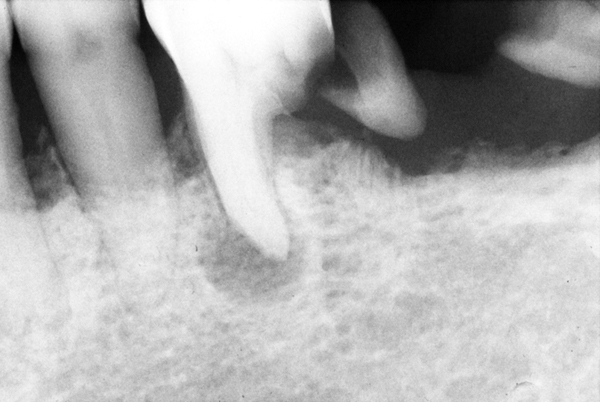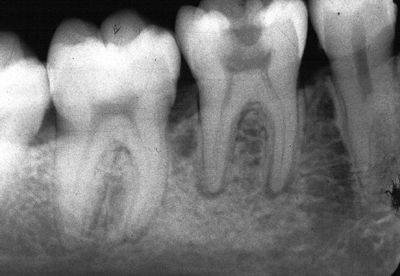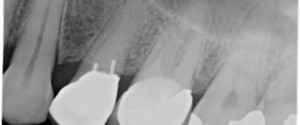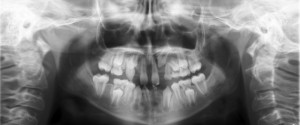This week is a follow up to last week with a case of chronic apical periodontitis. The primary difference of chronic apical periodontitis versus acute apical periodontitis is the presence of sclerotic bone formation. This sclerotic bone formation (sometimes referred to as sclerosing osteitis) may present in one of three ways. Radiographically this will appear as an area of increased bone deposition near the source of inflammation, which is frequently the apex.
- Sclerosing osteitis only
- Sclerosing osteitis + Widened periodontal ligament space
- Sclerosing osteitis + Rarefying osteitis
 (And yes, the distal root of the molar doesn’t look too good either. 🙂 )
(And yes, the distal root of the molar doesn’t look too good either. 🙂 )
If you have any questions or comments about this, please let me know. Thanks and enjoy!
SPONSOR




so on the basis of deposition of bone near the inflamed area its called apical periodontitis .so can we say that in first stage where you showing that deposition of bone near the source of inflamation . and atlast it still not make clear when we say that its acute or chronic …….
Which one is the sclerotic bone?
All three show examples of sclerotic bone which are the areas of increased radiopacity around the apices of the teeth.